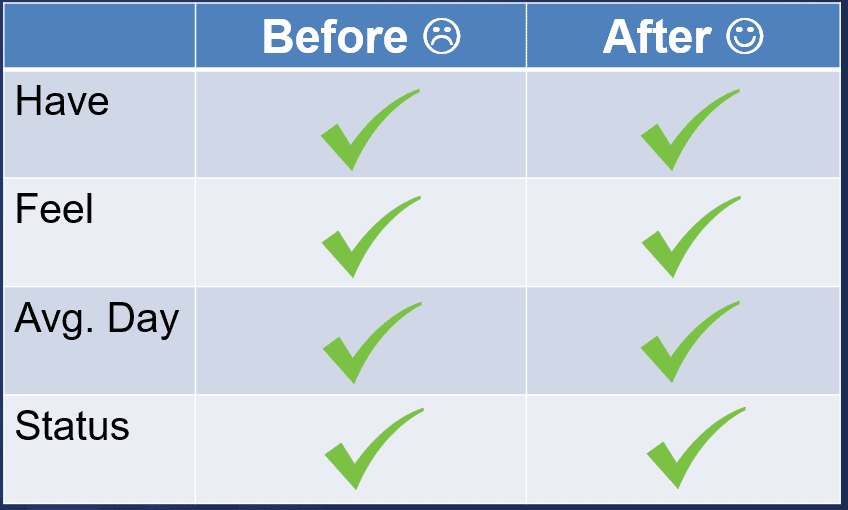Storytelling brings content to life. Not the once upon a time, and they lived happily ever after storytelling. Stories that humanize your brand and allow you to connect with your audience on a more emotional level. Isn’t a customer review essentially a story? It is the story of a real person and their real experience with a product or service. Your brand story builds trust, motivates your audience toward becoming a customer, and can be exciting. Yes, you might be marketing to other businesses, but B2B buyers are still human beings who base decisions on emotion. All companies have a story to tell. Appeal to your buyers’ emotions and create connections through storytelling with these B2B content marketing tips.
The Intersection of Storytelling & B2B Content Marketing
In a fictional story, we feel joy when the protagonist triumphs, and we feel sadness when a tragedy occurs. As readers, we have immersed ourselves in the story. Brand stories can have a narrative, as well. Think about who the main character is, what the conflict is, and how the story reaches a point of resolution. It’s the same idea as a customer with a pain point and letting them know how your business has the solution to solve their problem. Storytelling enables you to describe technical elements from a human perspective, giving your readers a character not only to relate with but also to root for.
What Are the Benefits of Storytelling in B2B Content Marketing?
Stories build trust and relationships. When you start sharing authentic stories about your brand, you can connect with audiences on a deeper level. Storytelling is the oldest form of communication. Stories help us teach, entertain, preserve knowledge, and even instill values. Our brains light up when we hear and see stories unfolding. The challenge comes in weaving a story that is meaningful to customers. For our stories to resonate, they need to be authentic. In B2B Demand Generation marketing, our stories talk about our customers and the solutions we offer to help solve their problems. This is more than just informing buyers; it’s creating a piece of B2B content marketing that is both emotional and educational.
The Real Reason People Buy….
You might think it’s all about speeds/feeds/features/benefits; but it’s not. It’s ultimately about how the buyer feels about these 3 things:
👉 How aligned your solution is with their vision for a better tomorrow.
👉 The pain of staying where they are today must be greater than the pain of change.
👉Their belief and trust in you to help get them there.
Remember, buyers have problems because they can’t solve them on their own; or they wouldn’t be problems. Your job is to help them overcome their problems and lead them to a better future. That’s where storytelling can make a big difference in separating your brand from the competition.
Characters Drive the Plot Forward
Storytelling is at the heart of consumable content. In fiction, the events that transpire should be the result of believable choices the characters make. In good B2B storytelling, your customer is the hero and you are the guide. Your customer (Hero) is looking for a better tomorrow but they don’t quite know how to get there. This is where you come in. The hero meets a guide. Think Obi-Wan Kenobi to Luke Skywalker. The guide is experienced and can challenge the hero to take a step forward provide guidance on the best way to go. Here are the key ingredients to good B2B Storytelling:
- Identify the hero (your customer)
- What do they want
- What are the obstacles in their way
- How does your product/service become the bridge to help them get what they want
- What is the path they should take to get there
- What does life look like when the get what they want
Watch Our Messaging Session From Day 3 of Our B2B Lead Funnel Course
The following video will help you understand how your customers think and give you tips on developing messaging and personas that will inspire and engage your audience. In the video we mention our personal developer tool
Once you have your persons figured out, you can use the following matrix to consider the before and after states. Brainstorm with your team on what the persona has/feel, what an average day is like, and how their status changes before and after they work leverage your offering. This will be gold!

Embrace Character Flaws
Trust in marketing is low, and that makes authenticity and transparency critical. Telling your brand story in a way that engages customers means steering clear of fantasy. Don’t be tempted to oversimplify your characters or present unrealistic resolutions to their problems. Be willing to tell hard truths, even if those truths require acknowledging a character flaw in your brand. Being honest will be beneficial in the long run.
Your storytelling narrative needs to set realistic expectations for buyers. While you might have the greatest business solution on the planet, it isn’t likely to fix all of their problems overnight. Highlight your product or service benefits without exaggerating or overselling.
When it comes to storytelling, the greatest lesson of all might be show, not tell. Storytelling shouldn’t be telling buyers your product is great; it should be showing them what it can do for them. Perhaps the best way to show your value is through real customer experiences.
Every brand has a story to tell, stories about who they are, where they came from, what they stand for, and where they are going. When done right, storytelling differentiates content, positioning your brand as an industry leader, and appeals to a buyer’s emotions. Start telling your story and see where it takes you.
Employees Are Part of Your Story
Be sure to leverage employee amplification as part of telling your story. Having employees tell your brand story not only humanizes your company but also allows your business to showcase its culture and increases employee engagement. People like doing business with other people. Consider putting together in-depth profiles that feature unique employees within your company.
B2B companies that embrace story telling should make rock stars of their employees by helping them develop their own personal brand. Make sure that you highlight employees across all departments. Create transparency for your customers while bringing team members closer together. Here is a PowerPoint template you can use to communicate the value of personal branding to your team.
Employees aren’t the only characters who can tell a story. Your top customers are an excellent choice for storytellers who will highlight your business. Spotlight customers through interviews or short questionnaires. When you let customers tell the story, you allow your audience to see the potential impact your business can have on them as well.
How Can We Help
Do you need help developing the right story and messaging for your business? We offer strategic planning, persona development, and content marketing services that can help. If you are ready to develop a story building trust and motivation, then sign up for a complimentary initial consultation/discovery meeting. Schedule yours today, and let’s see if we can help.
Key Takeaways
- Stories that humanize your brand and allow you to connect with your audience on a more emotional level.
- When done right, storytelling differentiates content, positioning your brand as an industry leader, and appeals to a buyer’s emotions.


